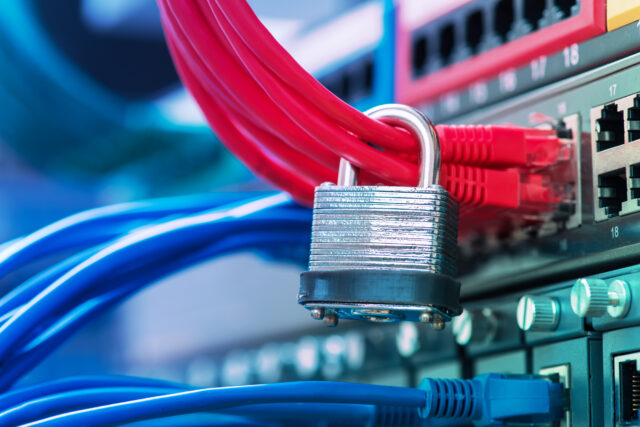A firewall is a critical tool for computer security. It acts as a barrier between your computer and the Internet, preventing malicious attacks from reaching your system. A firewall can block or allow specific network traffic based on certain criteria, such as an IP address or port number. In this article, we’ll take a look at what firewalls are and how they work to protect your system from various threats.
At its core, a sangfor firewall is simply a set of rules that govern how data can be transmitted over the internet. These rules are determined by the user and control which types of incoming and outgoing traffic on their network are allowed or blocked. Firewalls can also monitor activity within the network to detect any suspicious activity that could potentially compromise security.
When setting up your firewall, it’s important to take into consideration what type of content you want to block or allow access to.
For example, you may decide to only allow certain trusted websites access while blocking other potentially dangerous sites with malicious content such as viruses or spyware programs.
Types of Firewalls
Firewalls are an important component in any secure network. They act as the first line of defense against malicious actors, protecting your system from a variety of different threats.
Firewalls come in many shapes and sizes, each offering different levels of protection. In this article, we’ll take a look at the different types of firewalls available and discuss their advantages and disadvantages.

- Packet Filtering Firewall: This type of firewall filters traffic based on IP addresses, ports, and other characteristics like protocol types (TCP/IP). It is used to control access to a network by allowing or denying certain packets based on predefined rules set up by the administrator. One advantage of packet filtering is that it can provide high levels of security as it provides granular control over what traffic is allowed into the network or not. On the downside though, it can be complex to configure correctly which requires expert knowledge and can be time-consuming for administrators to maintain due to its complexity.
- Application Layer Firewalls: Unlike packet filtering firewalls which operate at the lower level (network layer), application layer firewalls work at the higher layers such as HTTP or SMTP protocols where they inspect individual data packets for malicious content.
Benefits of Firewalls
A firewall is a form of security that helps protect a computer or network from malicious software, hackers, and viruses. Firewalls can be both hardware-based or software-based, although the majority of firewalls today are a combination of both.
While any business needs to understand the benefits of having a firewall in place, it’s even more essential for those who conduct any kind of online activity such as eCommerce or banking.
The primary benefit of using firewalls is that they act as an effective deterrent against malicious attacks. Firewalls monitor incoming and outgoing traffic to detect suspicious activity and block any unauthorized attempts at accessing your system.

This can help prevent data breaches, which could otherwise result in significant losses for organizations that rely on their computers to store sensitive information such as customer records or financial details.
Another advantage is that firewalls allow you to control access to certain networks and websites by creating rules about which users have permission to access what data.
This can help businesses ensure their networks remain secure by limiting who has access to and what kind of content they can view on their systems. It also ensures employees don’t spend too much time surfing the web when they should be focusing on work tasks instead!
Different Configurations for Firewalls
Firewalls have become an essential tool for protecting computer networks from malicious attacks. They work by blocking certain types of traffic and allowing only authorized users to access the network.
Firewalls come in various configurations, each with its own set of advantages and disadvantages. In this article, we’ll explore some of the most common firewall configurations and discuss how they can help protect networks from malicious attacks.
The first type of firewall configuration is a packet-filtering firewall. This type of firewall inspects incoming packets for specific criteria before deciding whether to accept or reject them.

Packet filters are good at preventing unauthorized access but they can be difficult to configure properly, as they require a detailed understanding of network protocols and port numbers. Additionally, packet filters may not be able to detect more sophisticated attacks that use encrypted traffic or manipulate packet headers to bypass the filter’s ruleset.
Another common type of firewall is a circuit-level gateway (or “stateful inspection”) firewall. This type examines TCP/IP connections rather than individual packets, allowing it to detect connection hijacks and other attempts at unauthorized access without requiring deep technical knowledge about network protocols and port numbers like packet filter firewalls do.
How to Manage a Firewall
Firewalls are an essential part of any network security setup. Firewalls provide a layer of protection between your computer or network and the Internet, keeping malicious traffic out and allowing only authorized traffic in. Managing your firewall is vital, as it helps ensure your system remains secure from cyber threats.
The first step in managing a firewall is to configure it properly. Depending on the type of firewall you are using, this could involve setting up rules defining what types of traffic can pass through the firewall, as well as configuring authentication methods for users attempting to access resources protected by the firewall. Once you have configured your firewall settings, you should test them to make sure everything is working as expected before putting them into use on a live network.

Once your firewall has been configured and tested, it’s important to keep an eye on its performance over time. This means regularly monitoring logs generated by the firewall so that any suspicious activity can be identified quickly and dealt with appropriately.
If you notice anything that looks abnormal or out of place in these logs then this could indicate that someone may be tampering with your system or trying to gain unauthorized access – if so then take immediate action to investigate further or block their IP address from accessing the system altogether.
Conclusion
A firewall is an essential tool for protecting computers and networks from malicious attacks. It provides security by restricting incoming and outgoing traffic to a computer or network based on predetermined rules.
Firewalls can also be used to monitor and log activity, as well as provide additional protection when combined with other security measures. In conclusion, firewalls are an invaluable tool for keeping networks and computers secure from external threats.







